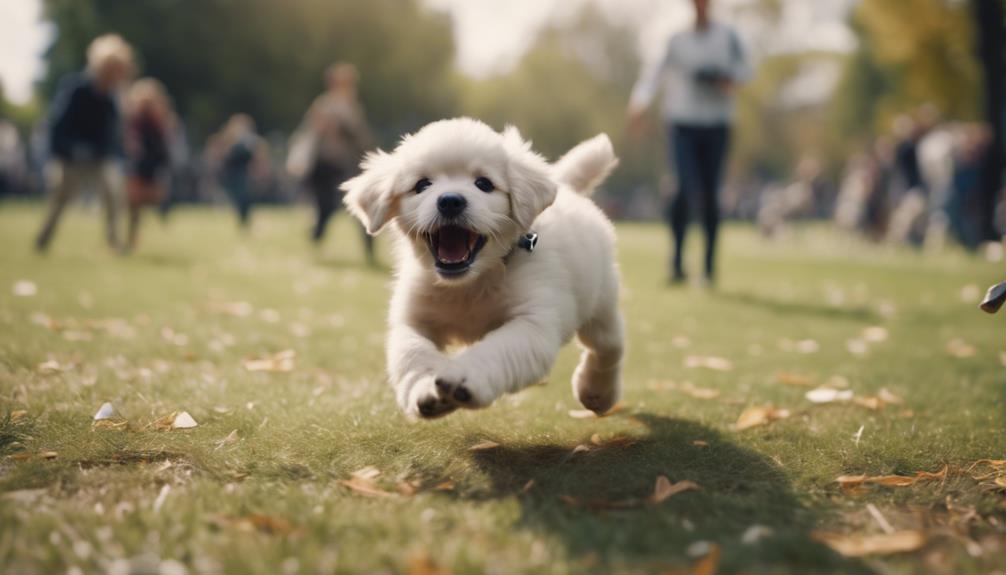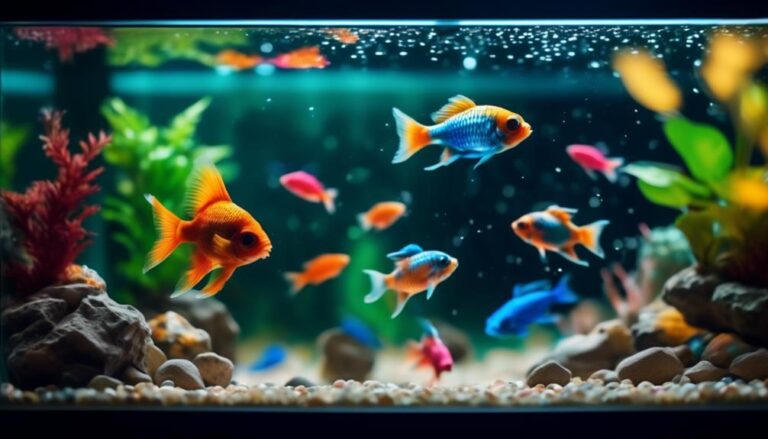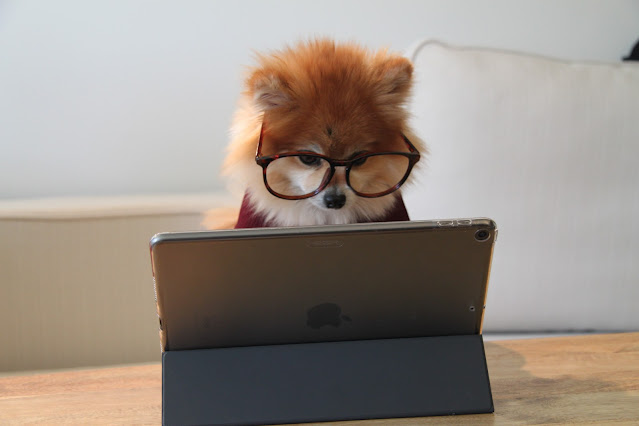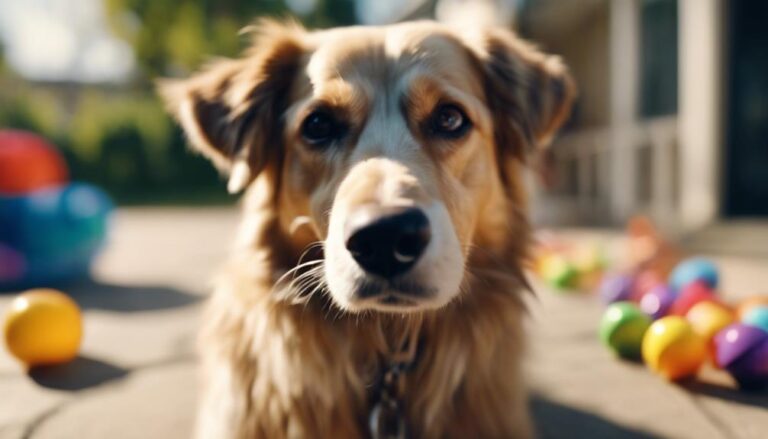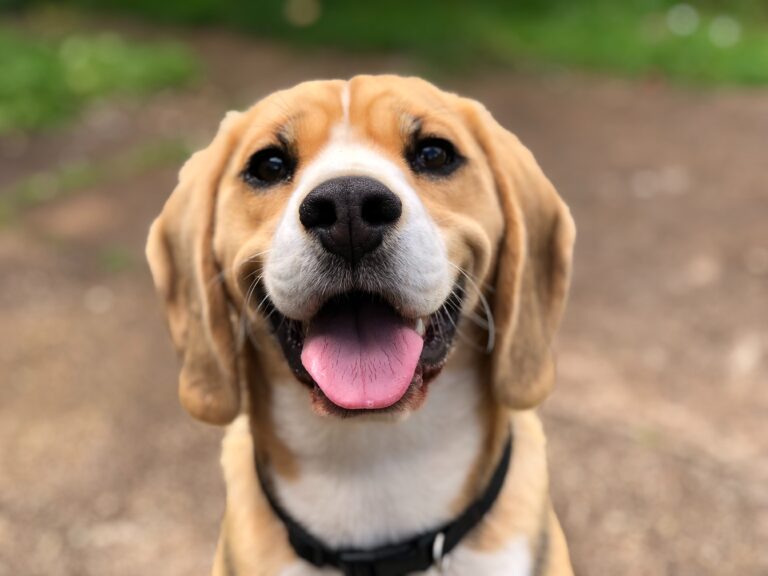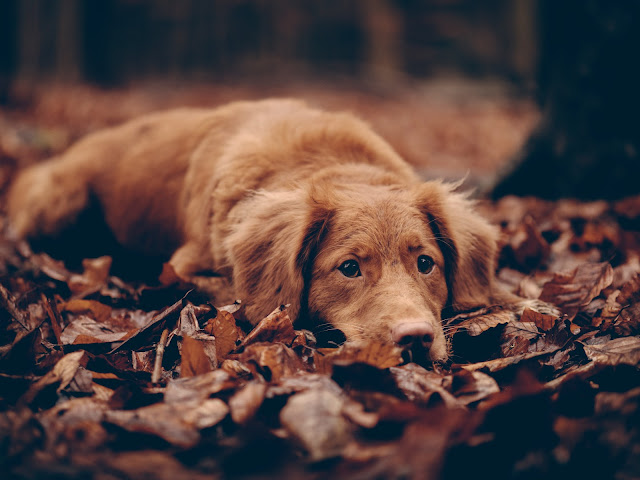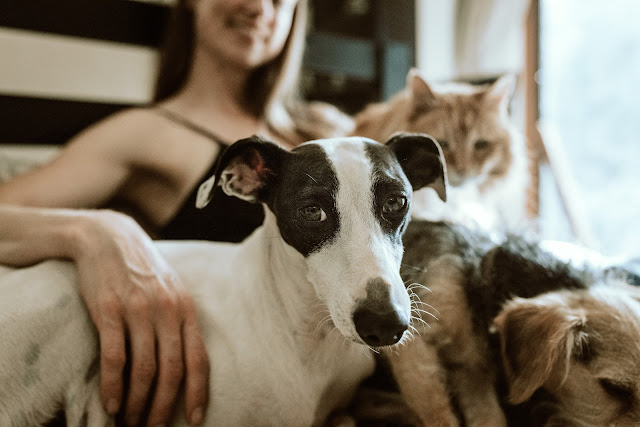In a pet photography career, you face challenges like handling animal behavior, managing clients, and market competition. You also need to adapt to seasonal changes, overcome technical hurdles, and balance creativity with client expectations. Pricing strategies, marketing efforts, and work-life balance are key areas to navigate. Embracing industry trends and evolving technology are essential for success. Each of these challenges offers opportunities for growth and learning in the dynamic world of pet photography.
Unpredictable Animal Behavior
Exploring the world of pet photography can be challenging due to the unpredictable nature of animal behavior. When it comes to capturing the perfect shot, understanding the basics of animal training can greatly benefit your photography sessions. Patience and persistence are key virtues that will help you navigate through the challenges that arise when working with animals.
Animal training plays an important role in pet photography. By familiarizing yourself with common training techniques, you can effectively communicate with your furry subjects and direct them during the photoshoot. Simple commands such as 'sit,' 'stay,' and 'look at the camera' can make a significant difference in capturing those picture-perfect moments.
In addition to animal training, patience is essential when working with pets. Some animals may be easily distracted or uncooperative during the photoshoot. It's important to remain calm and composed, allowing the animal to adjust to the environment at its own pace. Remember, Rome wasn't built in a day, and the same goes for getting that ideal pet portrait.
Persistence is another valuable trait to cultivate in the world of pet photography. Not every photoshoot will go as planned, and that's okay. Keep trying different approaches, be open to improvisation, and don't give up easily. With perseverance, you'll eventually capture those magical moments that make all the challenges worthwhile.
Handling Demanding Clients
When facing demanding clients in your pet photography career, remember the importance of managing their expectations. Clearly communicate your boundaries and be firm yet flexible in your scheduling to accommodate their needs. By setting clear guidelines and maintaining open communication, you can navigate challenging client situations with professionalism and efficiency.
Client Expectation Management
Traversing through the challenges of pet photography often involves effectively managing client expectations, especially when dealing with demanding clients. Setting boundaries is essential in maintaining a balance between meeting client needs and preserving your artistic vision. By clearly communicating what you can deliver and what is beyond your scope, you establish a foundation for a successful collaboration. Managing expectations is a delicate art that requires finesse in handling client relationships. Aim for transparency to guarantee that both parties are on the same page. Ultimately, client satisfaction hinges on how well you can fulfill their expectations while staying true to your style and capabilities. Mastering this skill will not only lead to happier clients but also a more fulfilling pet photography career.
Communication and Boundaries
Establishing clear communication and boundaries with demanding clients is vital in maintaining a harmonious and successful pet photography career. When it comes to client communication, make sure you are transparent about your services, pricing, and what they can expect. Setting expectations from the beginning helps manage client demands effectively. Clearly outlining your professional boundaries is essential; ensure clients understand your working hours, the number of revisions included, and any additional charges. Provide clear guidelines on how clients can reach out to you and what the response time typically is. By maintaining open and honest communication while also setting firm boundaries, you can navigate challenging client situations more effectively and build a reputation for professionalism in the pet photography industry.
Flexibility in Scheduling
Maintaining a flexible schedule is key to effectively managing demanding clients in the pet photography industry. Time management plays a vital role in balancing client needs and personal commitments. By clearly communicating your availability and setting boundaries, you can establish realistic expectations with clients. It's important to prioritize tasks and allocate sufficient time for each appointment, editing session, and client interaction. When juggling multiple projects, stay organized and make use of scheduling tools to avoid conflicts. Remember to factor in buffer time for unexpected delays or additional client requests. By proactively managing your schedule and communicating effectively with clients, you can navigate the demands of the pet photography business while maintaining a healthy work-life balance.
Competition in the Market
Traversing the competitive landscape of the pet photography market can be challenging for aspiring professionals. To stand out, it's important to develop effective marketing strategies that set you apart from the competition. Utilizing social media platforms, creating a visually appealing website, and collaborating with pet influencers can help boost your visibility and attract new clients.
Customer retention is another key aspect to focus on in this competitive market. Providing outstanding customer service, delivering high-quality photographs, and offering loyalty programs can help build strong relationships with your clients. By ensuring a positive experience, you increase the likelihood of repeat business and referrals, which are essential for sustaining success in the long run.
In such a competitive industry, it's vital to stay updated on the latest trends and techniques. Attending workshops, networking with other pet photographers, and continuously honing your skills can give you a competitive edge. Embracing innovation and creativity in your work can help you differentiate yourself and appeal to a broader audience.
Seasonal Fluctuations in Business
Steering through the pet photography business, you may encounter challenges due to seasonal fluctuations impacting your client flow. Seasonal changes can have a notable impact on the demand for pet photography services. During peak seasons like holidays or warmer months, you may notice an influx of clients wanting photos of their furry companions. However, in slower seasons, such as colder months or post-holiday periods, you might experience a decrease in bookings.
To navigate these fluctuations, it is essential to develop seasonal marketing strategies to attract clients during slower times. Consider offering special promotions or themed photoshoots that align with the current season to generate interest. Additionally, focusing on client retention during busy seasons can help create a loyal customer base that may return even during slower periods.
Business growth during seasonal fluctuations can be challenging but not impossible. One way to counteract the effects of seasonality is by diversifying your services. Apart from standard pet photoshoots, you could offer additional services like pet portrait printing on merchandise, creating photo albums, or even pet photography classes. By diversifying your offerings, you can appeal to a broader audience throughout the year, helping stabilize your income despite seasonal variations.
Technical Challenges in Photography
Exploring the world of pet photography, you may encounter technical challenges that require problem-solving and creativity to capture the perfect shot. When it comes to lighting techniques, mastering the use of natural light or artificial lighting setups can have a major impact on the quality of your photos. Understanding how to manipulate light to enhance the features of your furry subjects is essential for creating stunning images. Additionally, knowing how to use editing software effectively can help you refine your photos further, adjusting colors, contrast, and sharpness to achieve the desired look.
Camera settings play an important role in pet photography. Familiarize yourself with adjusting aperture, shutter speed, and ISO to adapt to different shooting conditions and pet behaviors. Being able to quickly modify these settings can make a difference in capturing dynamic moments with clarity and precision. Furthermore, regular equipment maintenance is crucial to make sure that your gear functions optimally. Keeping your lenses clean, batteries charged, and checking for any wear and tear can prevent technical hiccups during photoshoots.
Balancing Creativity and Client Expectations
Steering the delicate balance between expressing your creative vision and meeting client expectations is a key aspect of a successful pet photography career. As you navigate this fine line, it's important to keep in mind the following points:
- Set Clear Creativity Boundaries: While creativity is vital in pet photography, it's important to establish boundaries early on. Communicate your style and artistic approach to clients, making sure they understand what to expect while also considering their preferences.
- Understand Client Expectations: To achieve client satisfaction, take the time to listen and comprehend what they envision for their pet's photoshoot. By understanding their expectations, you can tailor your creative ideas to align with their desires.
- Collaborate with Clients: Encourage open communication and collaboration with clients throughout the process. By involving them in decisions and updates, you can make sure that your creative vision remains in sync with their expectations.
- Seek Feedback: After a photoshoot, gather feedback from clients to assess whether their expectations were met. Constructive criticism can help you refine your approach and strike a better balance between creativity and client satisfaction.
Pet Safety and Handling Concerns
As you start capturing beautiful pet photographs, guaranteeing the safety and proper handling of the animals throughout the photoshoot is vital. Pet safety and handling concerns are pivotal aspects of a pet photography career. Developing strong pet handling skills is essential to create a safe and comfortable environment for the animals during the photoshoot.
When working with pets, always prioritize safety precautions to prevent any accidents or stress to the animals. Make sure the environment is pet-friendly by removing any potential hazards and securing the shooting area. It's essential to be patient and gentle with the animals, earning their trust before attempting any poses or shots.
Understanding animal behavior and body language is key to anticipating their reactions and ensuring a smooth photoshoot. Respect the pet's boundaries and never force them into uncomfortable situations for the sake of a shot. Use positive reinforcement techniques and treats to encourage good behavior and cooperation during the session.
Additionally, always have a plan for emergencies and be prepared to handle unexpected situations calmly and efficiently. Being mindful of the pet's well-being throughout the photoshoot not only ensures their safety but also contributes to capturing genuine and heartfelt moments in your photographs. By prioritizing pet safety and handling concerns, you can establish a reputation as a responsible and caring pet photographer in the industry.
Building a Strong Portfolio
When building a strong portfolio in pet photography, focus on showcasing a diverse range of photo styles to attract potential clients. Make sure to capture unique moments that highlight the personality and essence of each pet, creating a compelling narrative through your images. Remember, a well-rounded portfolio can help you stand out and establish yourself in the competitive field of pet photography.
Photo Style Diversity
To construct a strong portfolio in pet photography, it is crucial to showcase a diverse range of photo styles. Here are some key elements to contemplate when aiming for style diversity:
- Master Lighting Techniques: Experiment with various lighting setups to create different moods and effects in your photos.
- Enhance Editing Skills: Develop your post-processing abilities to bring out the best in each photo.
- Utilize Composition Tips: Explore different angles, perspectives, and framing techniques to add visual interest to your images.
- Play with Color Schemes: Experiment with different color combinations to evoke different emotions and enhance the overall appeal of your pet photos.
Capturing Unique Moments
Diversifying your pet photography portfolio with unique moments captured skillfully is key to standing out in the competitive field. Utilizing lighting techniques and exploring artistic angles can add depth and creativity to your shots. Remember to focus on capturing the pet's personality through candid shots that showcase their individuality. By paying attention to the interplay between light and shadows, you can create visually striking images that tell a story. Experimenting with different perspectives and framing can help you discover fresh ways to portray the bond between pets and their owners. Embrace spontaneity and be ready to snap those unexpected, heartwarming moments that truly capture the essence of your furry subjects.
Pricing and Profitability Struggles
Traversing the intricate terrain of pricing in pet photography can often present significant challenges for aspiring professionals. When setting your prices, it's important to strike a balance between attracting clients and ensuring your profitability margins. Here are some key points to keep in mind:
- Pricing Strategies: Developing a pricing strategy that aligns with your skills and market demand is vital. Offering different packages catering to various client needs can help you attract a wider audience. However, be careful not to underprice your services, as this can devalue your work and hinder business growth.
- Client Relationships: Building strong relationships with your clients can positively impact your pricing structure. Satisfied clients are more likely to invest in higher-priced packages or recommend your services to others. Providing excellent customer service and creating a personalized experience can justify higher price points.
- Profitability Margins: Calculating your costs accurately and factoring in your time, equipment, and overhead expenses is essential for maintaining healthy profitability margins. Avoid pricing yourself too low just to book more clients, as this can lead to burnout and financial strain in the long run.
- Business Growth: As you navigate pricing challenges, keep an eye on your business growth. Regularly reviewing and adjusting your prices to reflect your expertise and market trends can help you sustain and expand your pet photography venture.
Marketing and Branding Obstacles
When it comes to pet photography, you might face challenges in developing a distinct brand identity that resonates with potential clients. You need to figure out how to effectively reach your target audience amidst a sea of competition. Positioning yourself strategically in the market can be vital for standing out and attracting clients.
Brand Identity Development
Building a strong brand identity is crucial for success in the competitive field of pet photography. When developing your brand identity, consider the following:
- Consistent Visual Storytelling: Use imagery to convey your unique style and approach to pet photography.
- Embrace Creative Expression: Showcase your creativity and innovation through your work to stand out from the competition.
- Brand Cohesion: Make sure that all aspects of your brand, from logo to color scheme, align with your photography style.
- Authenticity: Be true to yourself and your values in your branding efforts to attract clients who resonate with your vision.
Target Audience Outreach
To effectively reach your target audience in pet photography, overcoming marketing and branding obstacles is key to establishing a strong presence in the industry. Utilizing social media strategies is essential for showcasing your work and connecting with potential clients. Engage with your audience by sharing engaging content, behind-the-scenes glimpses, and client testimonials to build trust and credibility. Networking events provide valuable opportunities to meet fellow professionals, potential clients, and industry influencers. Establishing community partnerships can help broaden your reach and enhance your reputation within the local pet-loving community. By actively participating in these activities, you can strengthen your brand identity, increase your visibility, and attract more clients to your pet photography business.
Competitive Market Positioning
Developing a distinctive brand identity is crucial in managing the competitive market positioning challenges encountered in the pet photography industry. To navigate these obstacles effectively, consider the following strategies:
- Pricing Strategies: Set competitive yet profitable prices that reflect your expertise and target market's willingness to pay.
- Networking Opportunities: Engage in industry events and online platforms to build relationships with potential clients and collaborators.
- Industry Trends: Stay updated on the latest trends in pet photography to offer innovative services that appeal to your target audience.
- Market Analysis: Conduct thorough market research to identify gaps in the market and tailor your services to meet the demands of pet owners effectively.
Maintaining Work-Life Balance
Balancing your pet photography career with personal life can be a challenging juggle, requiring careful planning and boundaries. In a field where passion often blurs the lines between work and personal time, it's essential to prioritize work-life balance. One of the key self-care strategies for maintaining equilibrium is setting clear boundaries between work hours and personal time. Establishing a designated workspace can help create a physical distinction between your professional and personal life, allowing you to mentally switch off from work when needed.
In addition to setting boundaries, time management plays an important role in achieving work-life balance. Prioritize tasks, delegate when possible, and schedule regular breaks to prevent burnout. Remember, taking care of yourself is not a luxury but a necessity for long-term success in your pet photography career. Make time for activities outside of work that bring you joy and relaxation. Whether it's spending time with loved ones, engaging in hobbies, or simply taking a walk outdoors, incorporating these moments into your routine can help recharge your batteries and improve your overall well-being.
Ultimately, maintaining work-life balance in a pet photography career is an ongoing process that requires mindfulness and dedication. By implementing self-care strategies and establishing clear boundaries, you can create a fulfilling career while still enjoying a satisfying personal life.
Evolving Industry Trends and Technology
Staying updated with the ever-evolving trends and technology in the pet photography industry can significantly impact the success of your career. Keeping abreast of these changes guarantees that you remain competitive and relevant in a fast-paced environment. Here are key aspects to focus on:
- Editing Techniques: Embrace the latest editing software and techniques to enhance your pet photos. Experiment with different styles to develop a unique editing aesthetic that sets your work apart.
- Social Media Presence: Utilize social media platforms to showcase your work, connect with potential clients, and network with other professionals in the industry. Engaging content and consistent posting can help boost your online presence.
- Online Portfolio: Maintain a visually appealing online portfolio that highlights your best pet photography work. Regularly update it with fresh content to captivate potential clients and demonstrate your skills.
- Mobile Photography: With the advancement of smartphone cameras, mobile photography has become increasingly popular. Embrace this trend by exploring mobile photography techniques and apps to diversify your skill set and reach a wider audience.
Frequently Asked Questions
How Can Pet Photographers Effectively Deal With Difficult Lighting Conditions During Photo Shoots?
When dealing with challenging lighting conditions in pet photography, opt for natural light whenever possible. If needed, use artificial lighting sources strategically. Enhance your photos through editing techniques to balance exposure and colors for stunning results.
What Are Some Ways Pet Photographers Can Stand Out in a Saturated Market?
To stand out in a saturated market, focus on unique branding and creative marketing. Specialized training and innovative techniques can set you apart. Showcase your style and expertise to attract clients and build a loyal following.
How Do Pet Photographers Ensure the Safety and Well-Being of the Animals They Work With?
To guarantee the safety and well-being of the animals you work with, building trust is key. Approach slowly, use calming techniques, respect their boundaries, and handle anxiety with care. Prioritize their comfort to capture beautiful moments.
What Strategies Can Pet Photographers Use to Attract High-Paying Clients?
To attract high-paying clients, focus on marketing strategies like social media ads. Build strong client relationships for referrals. Use pricing strategies that reflect your value. Continuously improve your portfolio to showcase your best work and attract premium clients.
How Do Pet Photographers Keep up With the Latest Trends and Technology in the Industry?
To keep up with the latest trends and technology in the pet photography industry, you can enroll in online courses and workshops, attend networking events, and conferences. Stay connected, learn, and grow to elevate your craft.
Conclusion
To sum up, maneuvering a pet photography career comes with its fair share of challenges. From unpredictable animal behavior to handling demanding clients and staying ahead of competition, there are various obstacles to overcome. It's essential to adapt to changing industry trends, maintain a work-life balance, and continuously improve technical skills. Despite the challenges, with determination and passion, you can carve out a successful career in this evolving field.

